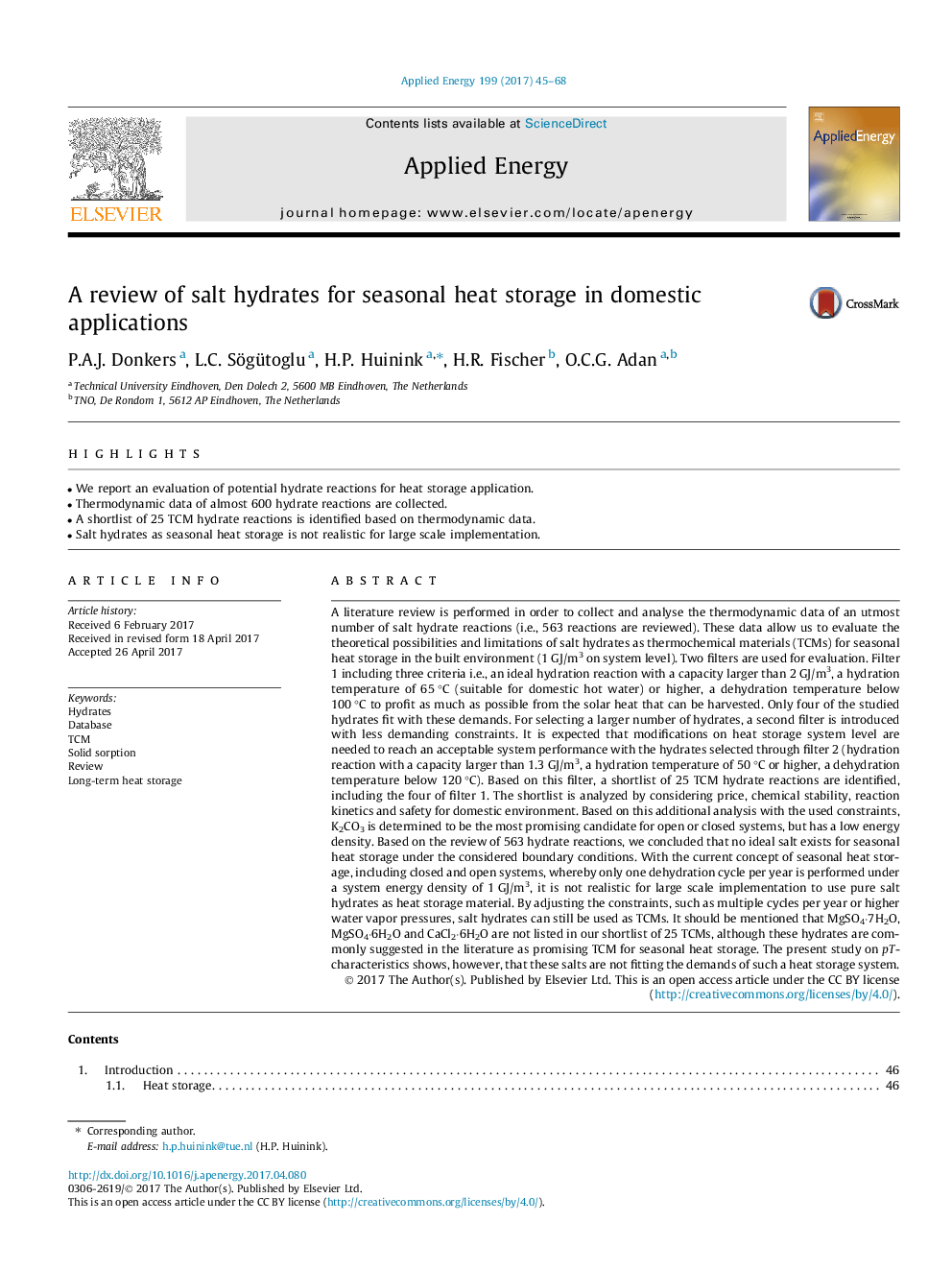| کد مقاله | کد نشریه | سال انتشار | مقاله انگلیسی | نسخه تمام متن |
|---|---|---|---|---|
| 4916175 | 1428091 | 2017 | 24 صفحه PDF | دانلود رایگان |
عنوان انگلیسی مقاله ISI
A review of salt hydrates for seasonal heat storage in domestic applications
ترجمه فارسی عنوان
بررسی هیدراتهای نمکی برای ذخیره گرمای فصلی در برنامه های داخلی
دانلود مقاله + سفارش ترجمه
دانلود مقاله ISI انگلیسی
رایگان برای ایرانیان
کلمات کلیدی
موضوعات مرتبط
مهندسی و علوم پایه
مهندسی انرژی
مهندسی انرژی و فناوری های برق
چکیده انگلیسی
A literature review is performed in order to collect and analyse the thermodynamic data of an utmost number of salt hydrate reactions (i.e., 563 reactions are reviewed). These data allow us to evaluate the theoretical possibilities and limitations of salt hydrates as thermochemical materials (TCMs) for seasonal heat storage in the built environment (1 GJ/m3 on system level). Two filters are used for evaluation. Filter 1 including three criteria i.e., an ideal hydration reaction with a capacity larger than 2 GJ/m3, a hydration temperature of 65 °C (suitable for domestic hot water) or higher, a dehydration temperature below 100 °C to profit as much as possible from the solar heat that can be harvested. Only four of the studied hydrates fit with these demands. For selecting a larger number of hydrates, a second filter is introduced with less demanding constraints. It is expected that modifications on heat storage system level are needed to reach an acceptable system performance with the hydrates selected through filter 2 (hydration reaction with a capacity larger than 1.3 GJ/m3, a hydration temperature of 50 °C or higher, a dehydration temperature below 120 °C). Based on this filter, a shortlist of 25 TCM hydrate reactions are identified, including the four of filter 1. The shortlist is analyzed by considering price, chemical stability, reaction kinetics and safety for domestic environment. Based on this additional analysis with the used constraints, K2CO3 is determined to be the most promising candidate for open or closed systems, but has a low energy density. Based on the review of 563 hydrate reactions, we concluded that no ideal salt exists for seasonal heat storage under the considered boundary conditions. With the current concept of seasonal heat storage, including closed and open systems, whereby only one dehydration cycle per year is performed under a system energy density of 1 GJ/m3, it is not realistic for large scale implementation to use pure salt hydrates as heat storage material. By adjusting the constraints, such as multiple cycles per year or higher water vapor pressures, salt hydrates can still be used as TCMs. It should be mentioned that MgSO4·7H2O, MgSO4·6H2O and CaCl2·6H2O are not listed in our shortlist of 25 TCMs, although these hydrates are commonly suggested in the literature as promising TCM for seasonal heat storage. The present study on pT-characteristics shows, however, that these salts are not fitting the demands of such a heat storage system.
ناشر
Database: Elsevier - ScienceDirect (ساینس دایرکت)
Journal: Applied Energy - Volume 199, 1 August 2017, Pages 45-68
Journal: Applied Energy - Volume 199, 1 August 2017, Pages 45-68
نویسندگان
P.A.J. Donkers, L.C. Sögütoglu, H.P. Huinink, H.R. Fischer, O.C.G. Adan,
